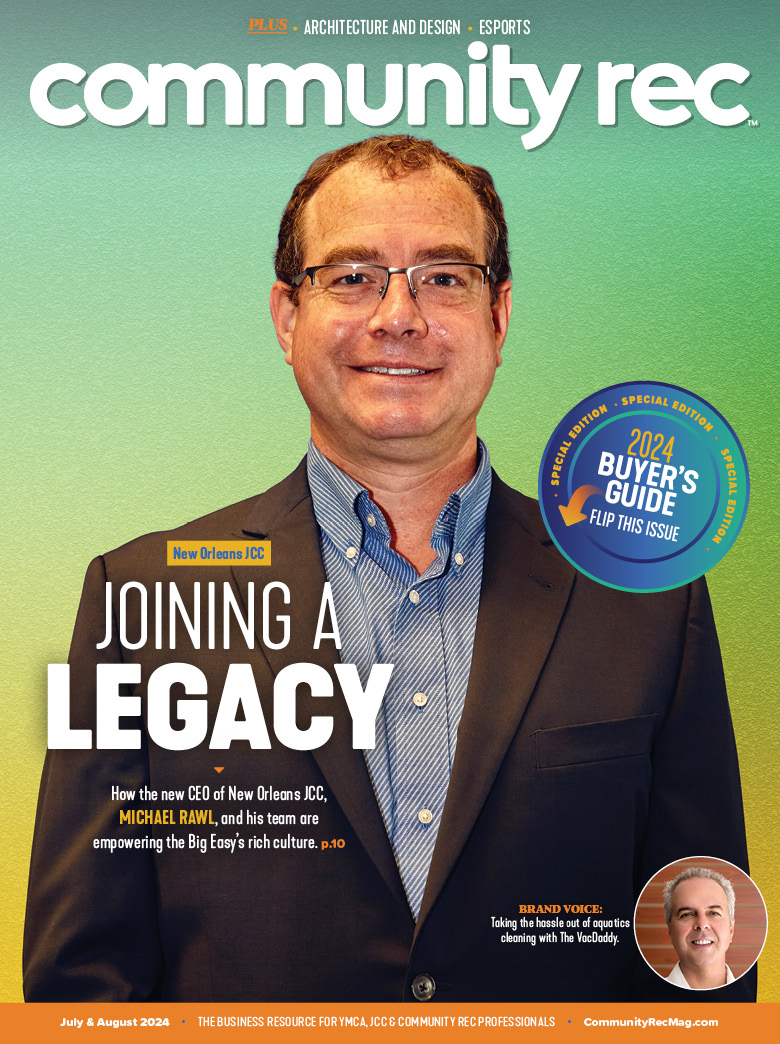On May 7, Community Rec Magazine presented a virtual roundtable addressing the COVID-19 crisis, the impact on staff and members, and how community rec centers can navigate the crisis.
The panelists were John Mikos, the president and CEO of the YMCA of Greater Kansas City; Kevin Mitchell, the director of parks and recreation for the REC of Grapevine in Grapevine, Texas; and Beth Segal, the chief program officer at the Katz JCC in Cherry Hill, New Jersey. Due to an emergency prior to the roundtable, Scott Henderson, the director of parks and recreation for the Provo Recreation Center in Provo, Utah, was unable to join.
The following is a summary of the top takeaways from the roundtable, including financial challenges from the shutdown, the future of programming after the pandemic, and more.
Impact of COVID-19
- Many organizations across the country had to cancel spring break programs that schools were sending children to.
- Facility closures have allowed the opportunity for deep cleaning, deferred maintenance, and building updates.
Financial Challenges
- In many cases, every source of revenue for facilities has stopped.
- Advocacy work in Washington D.C. has been important for the YMCA, since many nonprofit organizations across the country have been unable to get relief through the Payroll Protection Program.
- Bigger organizations don’t meet the requirements for financial aid because of how many employees they have.
- A way to improve your financial situation for the future is retaining a certain number of employees to get payroll tax credits.
Youth Engagement
- The pandemic is an opportunity to repurpose unused facilities into childcare centers for essential workers.
- With public spaces being closed, many youth and families are losing access to Wifi — it’s worth finding ways to help families access Wifi so children can do their homework.
Keeping Staff Members Busy
- Set up a phone bank for part-time staff to operate — they can answer calls from members who need assistance, or call at-risk populations such as youth or seniors, to check in on them.
- Let staff members manage virtual platforms, such as fitness classes, cooking classes, mind-body programming and youth education activities.
- Use live videos with costumed movie characters to boost youth engagement.
Post-Pandemic Virtual Programs
- Virtual programming is here to stay, and will be much more prominent in the industry.
- Organizations will need to consider dedicating staff members solely to producing online content — videography, editing, etc.
- Having balance between virtual and in-person programming will be important — people still need personal interaction.
- Participants of all ages are becoming more comfortable using technology.
Senior Engagement
- Emergence of more virtual programming and increased comfort using technology will allow organizations to better serve senior populations.
Reopening
- Summer day camp will look very different, with new cleanliness, distancing and program size standards.
- Organizations with several facilities will likely stagger when they open, rather than open all of them at once.
- Communicating new cleanliness and safety standards will be critical.
- If a facility has the space, moving half of its equipment into the gym to create more space is an option for promoting social distancing.
- Facilities could see as high as a 75% reduction in typical usage upon reopening.
- Most facilities will operate under reduced hours.
- A daily cleaning schedule could comprise of two to three hours of operation followed by one hour of cleaning while the facility is closed. After that cleaning, the facility reopens for another two to three hours, followed by another hour of cleaning. Repeat on a daily basis.
To access the on-demand version of this webinar, click here.











